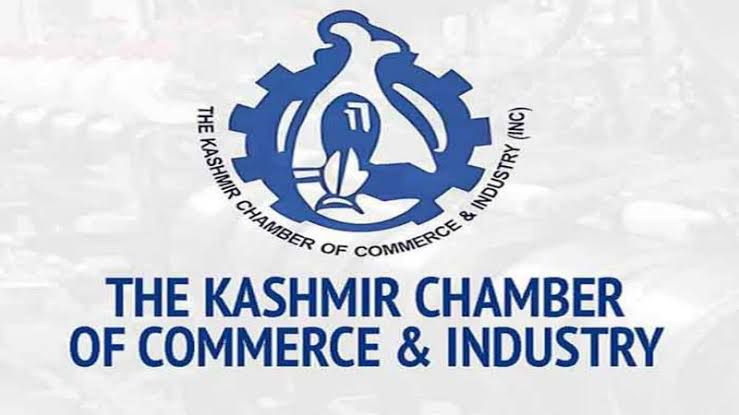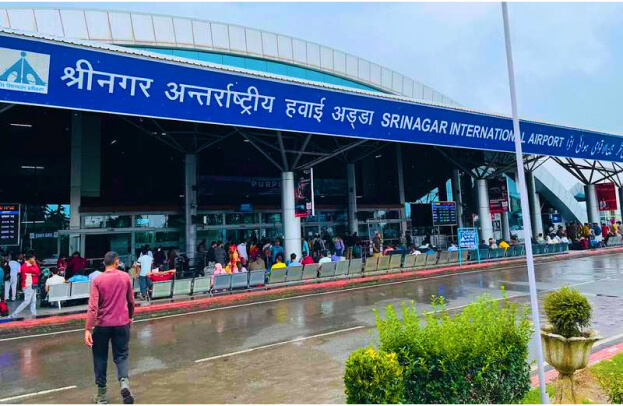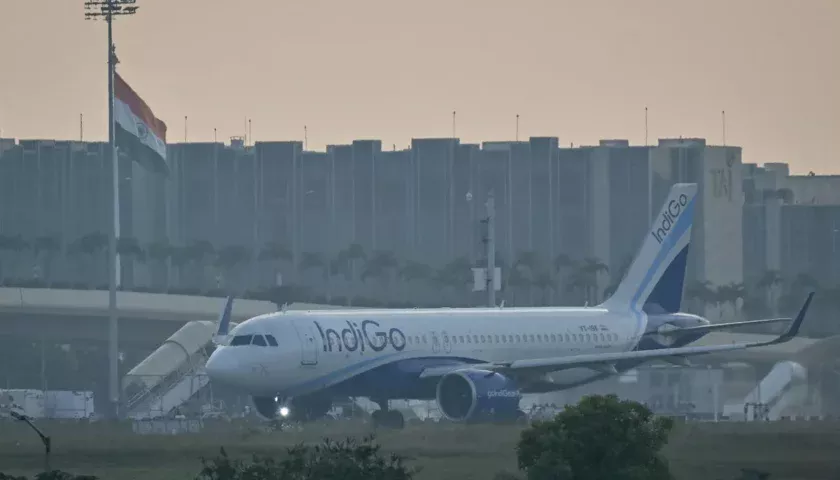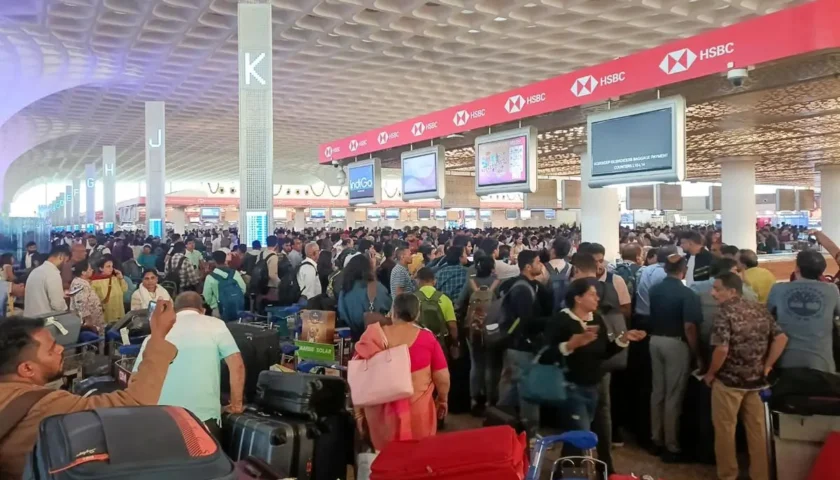KCC&I Urges J&K Bank to Extend Deadline for Rehabilitation Package 2025
By: Javid Amin | 06 November 2025
In the aftermath of the disturbing events that hit the valley of Pahalgam earlier in 2025, one of the key institutions in the region — J&K Bank — stepped forward with a relief-oriented initiative: the Rehabilitation Package 2025. Designed to ease burdens on borrowers in tourism, handicrafts and services sectors impacted by the incident, the scheme was welcomed as timely and necessary. However, as the deadline looms, the Kashmir Chamber of Commerce & Industry (KCC&I) has formally asked the bank to extend the deadline, citing technical and procedural bottlenecks that left several willing borrowers unable to complete the formalities in time.
This article explores the background of the package, the KCC&I’s plea for extension, what borrowers are facing on the ground, and why granting extra time could make a critical difference in fairness and economic recovery in the region.
The Context: What Happened in Pahalgam
The region of Pahalgam, nestled in Jammu & Kashmir, has long been a tourism hub. However, on 22 April 2025, a terror attack shattered that normalcy.
-
According to reports, armed assailants targeted tourists in the Baisaran Valley near Pahalgam, resulting in at least 26 deaths and many more injured.
-
Local businesses in tourism, hospitality, handicrafts and allied services suffered immediate shock-waves: bookings cancelled, travel plans aborted, cash flows disrupted.
-
The broader economic fallout included a sharp decline in footfall, rising uncertainty, and increased stress on borrowers who had loans parked with banks, many of whom depended on tourism income or related supply chains.
In this rapid shift from growth to crisis, many enterprises found themselves ill-prepared to absorb a shock of this magnitude. That sets the stage for how the bank’s relief initiative came into being.
The Rehabilitation Package 2025 by J&K Bank
Recognising the scale of disruption, J&K Bank launched the “Rehabilitation Package 2025” aimed at assisting eligible borrowers who suffered because of the disturbances post the Pahalgam incident.
Key features of the package
While full details are publicised via the bank, the broad contours include:
-
Relief measures for borrowers from tourism, handicrafts, service sectors who were impacted by the disturbances in J&K.
-
A timeframe within which eligible borrowers had to submit their consent and complete formalities—reportedly the last date was 5 November 2025.
-
The goal: restore financial stability, ease repayment obligations, and enable affected enterprises to get back on financial footing.
Why the initiative matters
-
It represents proactive corporate-social alignment of a bank operating in a sensitive region: rather than wait for defaults to pile up, the bank moved to provide relief.
-
For sectors like tourism and handicrafts, which are highly sensitive to security perceptions and external shocks, such a package can be the difference between survival and closure.
-
It signals to stakeholders—borrowers, trade bodies, government—that the financial ecosystem recognises the interlinked nature of disturbance → economic risk → financial stress.
However, despite the well-intentioned design, implementation always presents real-world bumps, which brings us to the next section.
The Challenge: Why An Extension is Being Requested
In its letter to J&K Bank’s Managing Director & CEO (Mr. Amitava Chatterjee), the KCC&I laid out a case for extending the deadline of the rehabilitation package. Key issues raised include:
-
Technical difficulties: Some borrowers willing to avail the package were unable to submit their consent or complete formalities due to digital-platform glitches, connectivity issues, or branch-level procedural delays.
-
Branch procedural lapses: At certain branch offices, the processes may not have been adequately communicated, or staff may have not been fully equipped to handle the surge of applicants and resolve their concerns, causing delays.
-
Good-faith applicants left out: Many borrowers say they expressed willingness before the deadline, but due to the above obstacles could not complete the final step—so they remain eligible in spirit, though not yet in form. The KCC&I emphasises that their failure to complete formalities is not their fault.
-
Fairness and inclusivity: The Chamber argues that an extension would bring in those inadvertently left out and ensure the scheme is truly inclusive, aligning with the bank’s own commitment to customer welfare.
Why timing matters
The deadline of 5 November 2025 (as per sources) puts pressure on borrowers operating in complex environments: seasonal income variations (especially tourism in J&K), logistics of documentation, and local infrastructure constraints all play a role. Missing the deadline can mean forfeiting the relief, which in turn may convert a manageable stress into a non-performing asset.
Moreover, from a macro-economic perspective, ensuring maximum take-up is important: lower participation risks leaving many distressed borrowers unsupported, which could ripple back into increased defaults, pressure on the bank’s asset quality, and weaker regional recovery.
What Stakeholders Are Saying – On The Ground
For Borrowers
Borrowers in sectors like tourism, handicrafts and services tell a consistent story: they were willing and ready to participate in the scheme, but the combination of short window, complex formalities and branch-level hiccups stalled them. The KCC&I’s letter highlights that many are “eager to fulfil all necessary formalities once given the opportunity”.
One real-world example: a small guest-house operator in Pahalgam who had to take time off during the peak season to attend to travellers, found it difficult to be physically present at the branch to sign papers within the deadline. A handicraft exporter from Srinagar similarly cited internet-connectivity problems when trying to upload documents for consent.
For J&K Bank
In its earlier customer-meet in Jammu, the bank’s Executive Director affirmed that the bank stands ready “to walk alongside” customers impacted by the Pahalgam incident and will “work closely with genuinely affected borrowers to ensure that the benefits of the rehabilitation package are delivered with transparency and compassion.”
Thus the bank has publicly signalled commitment to support, which lends legitimacy to the KCC&I’s appeal for extension — it aligns with the bank’s own stated priorities.
For Trade Bodies / KCC&I
As the regional apex chamber of commerce, the KCC&I has a dual role: first, to represent member-businesses and raise their concerns; second, to partner with financial institutions in enabling economic recovery. By writing to the bank, the chamber is fulfilling its advocacy role.
Its communication stresses not just the immediate benefit to individual borrowers, but also the larger message of fairness—ensuring that no eligible party is unfairly excluded due to procedural issues.
Why An Extension Would Make Strategic Sense
Granting an extension to the deadline is not just a favour—it is strategic for all stakeholders. Here’s why:
For the bank
-
Risk mitigation: Enabling more borrowers to join the relief scheme helps reduce the risk of defaults and non-performing assets in the medium term.
-
Reputation & goodwill: Demonstrating flexibility and responsiveness during crisis bolsters customer trust and engenders strong brand equity in a region where socio-economic trust is vital.
-
Better outreach: An extension allows the bank to deepen its reach, capture more affected borrowers, and ensure the scheme’s uptake is maximised—not truncated by arbitrary deadlines.
For borrowers and regional economy
-
Inclusive support: Borrowers who were ready but constrained by process delays get a fair shot, which reduces the possibility of economic exclusion.
-
Recovery boost: For small businesses especially, the relief scheme may be the cushion that prevents closure or broken supply-chains—thereby preserving jobs, incomes and local economic vibrancy.
-
Confidence signal: The extension would send a signal to investors, lenders and local entrepreneurs that the region’s institutions are responsive, which can boost further investment or lending activity.
For trade & economic ecosystem
-
Stabilising sectors: Tourism, handicrafts and services are interconnected; weaker borrowers mean weaker demand for others. A stronger buffer for one translates into a more stable ecosystem.
-
Community-level resilience: Many borrowers represent micro, small and medium enterprises (MSMEs) in remote or border-areas; their survival determines local livelihoods, not just bank books.
For fairness & ethics
-
The fundamental principle of “relief” is that it should reach those who need it. If procedural hurdles prevent legitimate beneficiaries from access, the objective of the package is undermined. Allowing extra time corrects that fairness gap.
What Needs to Happen: Practical Recommendations
If the bank and stakeholders move ahead with an extension, several practical steps should accompany it to ensure effectiveness:
-
Clear communication: The bank should issue a public addendum announcing the extension, the new deadline, criteria, process steps and a help-desk or branch-specific contact for guidance.
-
Branch-level facilitation: Deploy dedicated officers in key branches (tourism-affected zones, handicraft clusters, border-areas) to assist borrowers in person, address procedural bottlenecks, and ensure effective uptake.
-
Simplified process: Where possible, reduce paperwork or accept digital consent forms, provide flexible timings (particularly for remote borrowers) and allow retroactive upload of missing documents.
-
Outreach campaign: The trade body (KCC&I) and the bank can partner to hold awareness sessions—both physical and virtual—to ensure borrowers are aware of the extension, understand the formalities, and are guided through them.
-
Monitoring & reporting: A transparent dashboard or regular bulletin that shows uptake numbers, categories of eligible borrowers covered, and remaining slots (if any) would help track progress and maintain credibility.
-
Special focus for remote areas: Borrowers in border or remote zones of J&K often face connectivity or infrastructure constraints. Tailored support (e.g., mobile banking booths, extended hours) should be considered.
-
Time-bound closure: While extension is required, it should be wisely bounded (say, additional 30–60 days) to avoid indefinite open-endedness which may undermine expediency and clarity.
Potential Objections & How to Address Them
Objection: Deadline must be firm to maintain financial discipline
Response: While deadlines are important, exceptional circumstances (terror-attack induced disruption, branch procedural lapses) justify flexibility. The extension is not about weakening discipline but enhancing access for genuinely willing beneficiaries.
Objection: Extension may open floodgates of late claims and fraudulent applications
Response: The same eligibility criteria apply; borrowers must show proof of impact and consent prior to the original deadline (to avoid last-minute rush). The bank can add checks (branch verification, supporting documents) without disadvantaging genuine cases.
Objection: Operational burden for branches
Response: The bank can anticipate this by allocating dedicated staff, using digital workflows, and coordinating with trade associations (like KCC&I) to manage the extension smoothly.
Bigger Picture: Banking, Relief & Region-Specific Challenges
The J&K Bank’s Rehabilitation Package is part of a larger narrative on how banking institutions operate in regions affected by instability. Some broader take-aways:
-
Banks as stabilisers: In regions like Jammu & Kashmir, where security incidents can trigger economic shockwaves, banks must go beyond standard risk-based lending and assume a role in stabilising livelihoods.
-
Relief vs credit: Relief packages (deferments, restructuring, support schemes) differ from fresh credit. They require coordination between bank, borrower, trade bodies and sometimes government notifications (for “disturbance” classification). For example, earlier the UT Level Bankers Committee had to define the incident under RBI Master Direction.
-
Public-private interplay: While the bank is a commercial entity, it operates within a socio-economic ecosystem. Collaboration with chambers like KCC&I, local government agencies and trade bodies enhances reach and legitimacy.
-
Messaging matters: The region’s perception of fairness, inclusion and institutional responsiveness impacts investment, tourism and local confidence. An extension of deadline is not just a technical detail—it signals responsiveness.
-
Operational readiness: In volatile zones, banks must build robust infrastructure (branch readiness, digital platforms, outreach capacity) ahead of contingencies. The delays reported in this case show how procedural friction can hamper relief.
Conclusion
The request by KCC&I to extend the deadline for J&K Bank’s Rehabilitation Package 2025 is not a mere plea—it is a reasoned call grounded in fairness, pragmatism and economic necessity. The facts are clear:
-
A serious incident in Pahalgam disrupted business activity and placed considerable financial stress on borrowers across sectors.
-
J&K Bank responded with a relief programme aimed to assist those borrowers.
-
Several willing borrowers have reportedly been unable to avail the scheme in time because of technical or procedural obstacles—through no fault of their own.
-
Extending the deadline aligns with the bank’s stated mission of customer welfare, helps maximise uptake, mitigates future credit risk and fosters stronger business resilience in the region.
In essence, the extension is an investment—not just in individual borrowers, but in the region’s economic recovery, in institutional trust, and in the value chain of tourism, handicrafts and services that sustains much of Jammu & Kashmir’s commercial vitality.
For the bank, trade bodies and borrowers alike, the next steps matter. Clear communication, efficient facilitation and strong monitoring will turn the extension from a good intent into a tangible success story.
If I were advising J&K Bank and KCC&I, I would recommend immediately agreeing on a modest extension (e.g., 30–45 days), jointly launch an awareness campaign, activate branch-support teams, and issue regular progress updates. Such transparent, coordinated action will demonstrate that relief is accessible, fair and meaningful—and that the region’s financial ecosystem remains resilient in the face of adversity.
PRESS NOTE
NO: KCC&I/JK/11/2025/4840 6TH NOVEMBER, 2025
KCC&I urges J&K Bank to extend deadline for Rehabilitation Package .
The Kashmir Chamber of Commerce and Industry (KCC&I) has formally written to Jammu and Kashmir Bank, urging an extension of the deadline for the J&K Bank Rehabilitation Package 2025, a relief initiative announced for borrowers affected by the disturbances in Jammu and Kashmir following the Pahalgam incident.
In its communication addressed to Mr Amitava Chatterjee, Managing Director and CEO of J&K Bank, KCC&I President Javid Ahmad Tenga stated that the rehabilitation package had been a significant and timely measure aimed at helping affected individuals and enterprises revive their financial activities and meet repayment obligations. The Chamber noted that the initiative had received an encouraging response from borrowers across various sectors, with many submitting their consent before the last date of November 5, 2025, for availing the J&K Bank’s Rehabilitation Package.
However, KCC&I pointed out that several applicants were unable to complete the required formalities due to technical difficulties and procedural lapses at some branch levels, despite having expressed their willingness to avail the benefits in time. The Chamber said these borrowers remain eager to fulfil all necessary formalities once given the opportunity.
The KCC&I, in its communication, requested that the bank extend the validity period of the scheme by a reasonable duration to include all consented and eligible borrowers who were inadvertently left out. It emphasised that the inability of some applicants to complete procedures within the deadline was not due to their own fault and that an extension would ensure fairness and inclusivity in the implementation of the scheme.
The Chamber maintained that granting such an extension would be consistent with J&K Bank’s commitment to customer welfare and equitable relief for those affected by the recent disruptions. The J&K Bank Rehabilitation Package 2025 was introduced to support borrowers from sectors including tourism, handicrafts, and services, who suffered financial setbacks following the Pahalgam incident.
FAIZ AHMAD BAKSHI
SECRETARY GENERAL
The Kashmir Chamber of Commerce & Industry INC.
2ND FLOOR, MOHIDIN TRUST BUILDING, RESIDENCY ROAD, SRINAGAR-KASHMIR-190001
TEL: 0194-2455446/2482176
FAX : 0194: 2452517
E-MAIL : thekashmirchamber@gmail.com
Website : www.thekcci.in




